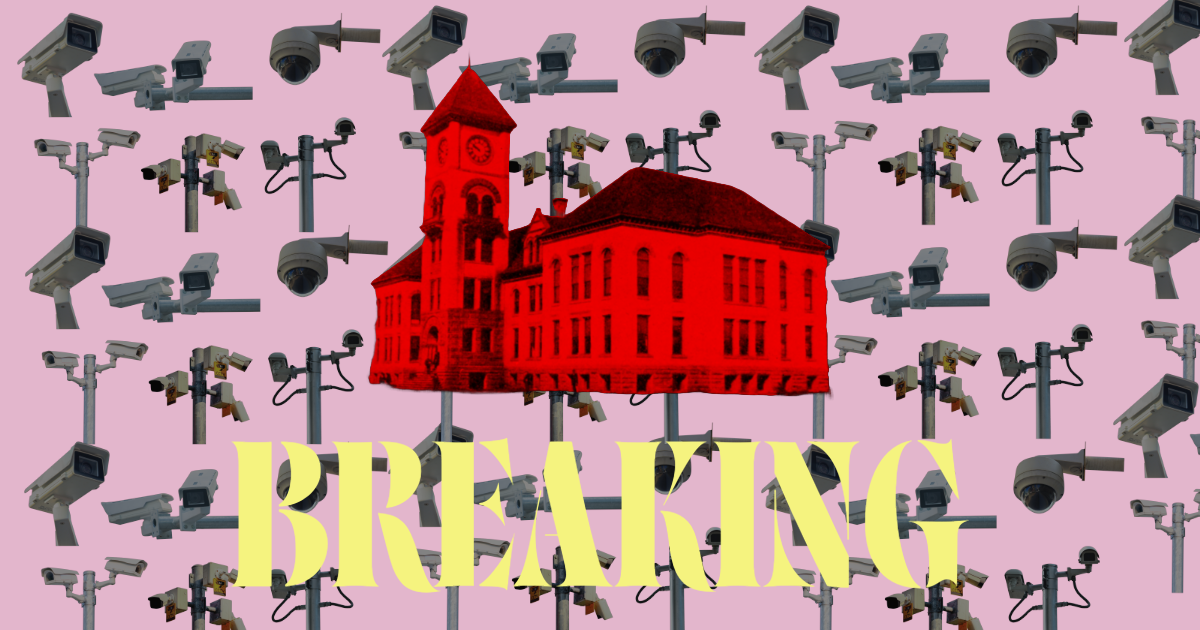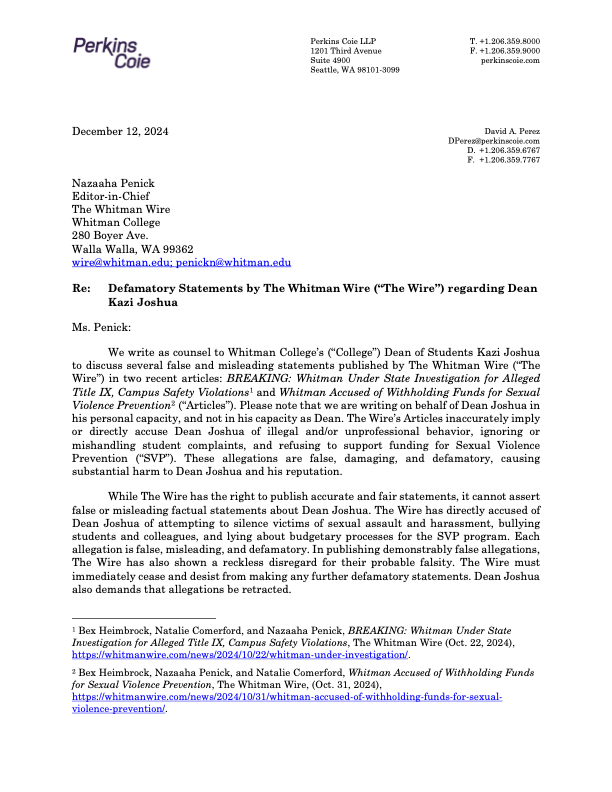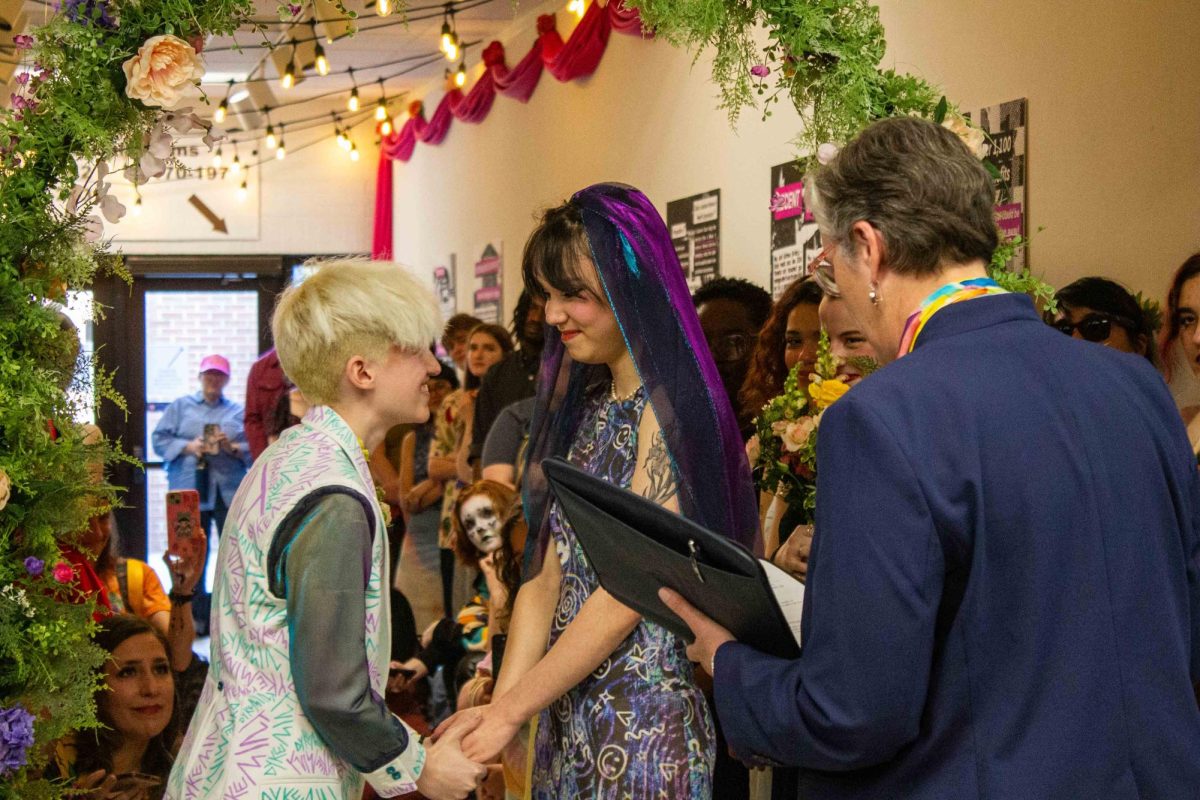It was the week before finals, and all through the campus, Whitman students were being trained to teach civil rights in Walla Walla Public Schools. The volunteer project, called Whitman Teaches the Movement, was born out of a partnership with the Southern Poverty Law Center and the Walla Walla Public School District in response to a study conducted by the center.
“It gets people thinking about this . . . When we come back [after break] everybody’s ready to go,” said Assistant Dean for Student Engagement Noah Leavitt.

In a report authored by Kate Shuster, the Southern Poverty Law Center gave each state in the nation a report card based on its coverage of the civil rights movement in its state standards. All but 16 states received an F, including Washington. It only took 70 percent to get an A.
“We’re concerned that the history of the civil rights movement is seen as African-American history rather than American history, and we’re also concerned that it is seen as a regional rather than a national issue. It’s not Southern history; it’s American history,” said Shuster, who gave a lecture about her report on Wednesday, Dec. 7, in Olin 130.
As a response to this lack of civil rights literacy, the center is currently working on compiling a civil rights curriculum with material for all grade levels as part of its Teaching Tolerance program. The center plans to introduce this curriculum in February 2012.
Whitman’s Student Engagement Center was intrigued about the project after reading about the center report in the New York Times. It contacted Shuster, who already had ties to Whitman after coaching the debate team in the 1990s, in hopes of potentially finding new community service projects for Martin Luther King, Jr. Day.
“Collaboratively this idea came together of having these trainings under the Teaching the Movement umbrella so that it became Whitman Teaches the Movement. We wanted to see what Whitman would come up with that would be right for Whitman,” said Shuster.
Through some serendipitous connections, the initial call led to the creation of the “Whitman Teaches the Movement” initiative, a program which allows Whitman students to test the center’s curriculum in local elementary, middle and high schools. Those involved with this unique opportunity are excited.
“Everybody sees it as something that’s going to be useful and interesting and timely, and it’s fun to create something . . . A month and a half ago nobody knew about this . . . We’re creating history,” said Leavitt.
The center intends to use Whitman Teaches the Movement as a model program before the curriculum is exported to other communities.
The Walla Walla Public School District is also looking forward to the program. The lessons tie in to the school district’s focus on safe and civil schools. Assistant Superintendent for Curriculum Instruction and Assessment Linda Boggs is especially excited for the possibilities of large-scale partnerships in the future.
“We are so lucky to live in a town with three colleges; having Noah Leavitt and [Community Service Coordinator] Kelsie Butts, who even think to call us . . . [is] something not all school districts have in their disposal,” she said.
Given that the trainings happen so close to finals week, the volunteer turnout was incredible. According to Butts, 40 students had signed up to participate in the program within 24 hours of announcing the project to the Whitman community. The overall number of volunteers exceeds the Student Engagement Center’s goal of 100.
“The number of students that, at a very difficult time of the school year, decided to throw themselves into a brand-new project that didn’t exist two months ago was overwhelmingly positive. I think it tapped into a lot of things that make Whitman students who all of you are: people who want to be change agents,” Leavitt said.
Whitman students listed a range of reasons for wanting to volunteer. A large number expressed a desire to go into teaching careers after graduation.
“A lot of people want to teach, but it’s not for everybody, so it’s important to find out early if teaching’s for you,” said Shuster, who first got interested in education by volunteering in a classroom during her sophomore year of college.
Other students who perhaps did not receive a good civil rights education are hoping to learn something new from the program as well.

“I hated history when I was little . . . I think I would have loved a lesson plan like this [as a second-grader] because it includes storybooks and cool college kids,” said volunteer and first-year Chelan Pauley.
Each grade level has a specific lesson plan. Second-graders will learn about the Greensborough sit-ins, fifth-graders will learn about historic baseball player Jackie Robinson, and seventh-graders will learn about women’s work in civil rights. Many of the lessons include a book that Whitman students will read to students and then give to the teacher of the classroom for further use. In her presentation, Shuster emphasized that young students are able to deal with much more complex ideas than they are often given credit for.
For some students, the idea of teaching in a classroom is daunting.
“I haven’t been in a fifth grade classroom since fifth grade, which is intimidating, but I’m really excited [to teach] because our state has an F and I’m really excited to be a part of this change in the education process,” said sophomore Nick Davies.
Shuster says that a little anxiety is necessary for teaching.
“If you’re not nervous, you’re not doing it right. That’s how I feel about teaching. Being nervous just means that you’re careful . . . Just like you shouldn’t be cavalier when you’re working with hydrochloric acid, neither should you be cavalier when you’re working with students’ brains. A little caution is appropriate,” said Shuster.
Many students are excited about the project’s potential.
“Since this is a pilot project, it’s hard to project the effects it will have. I can say that interaction between the school and the community is a positive thing. I hope it can be a model for the future,” said senior Jackson Bellaimey, who hopes to become a teacher.





Kevin Shenefield • Dec 8, 2011 at 10:21 am
What is the name of the book that will be read from and then passed onto the teaching staff?